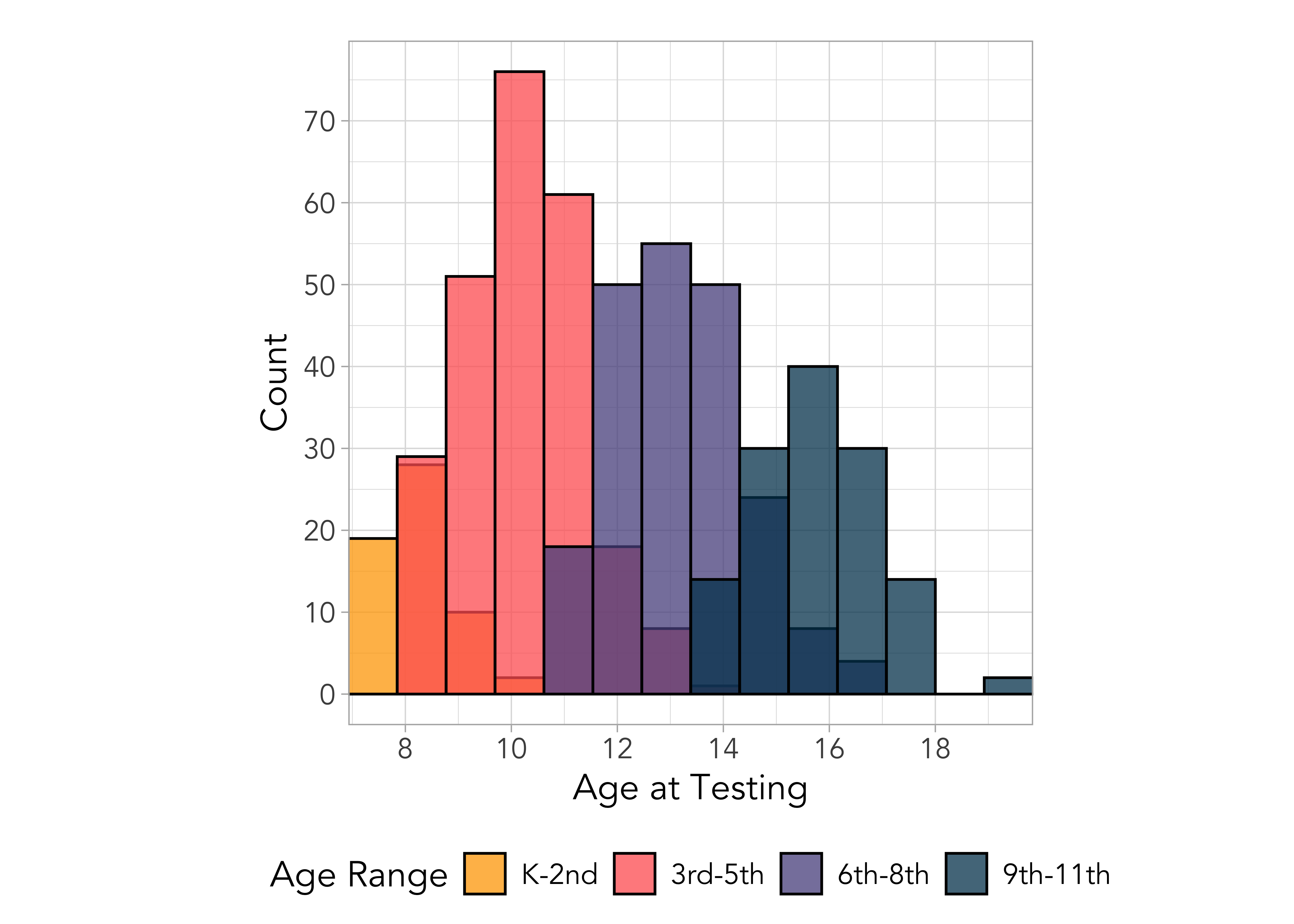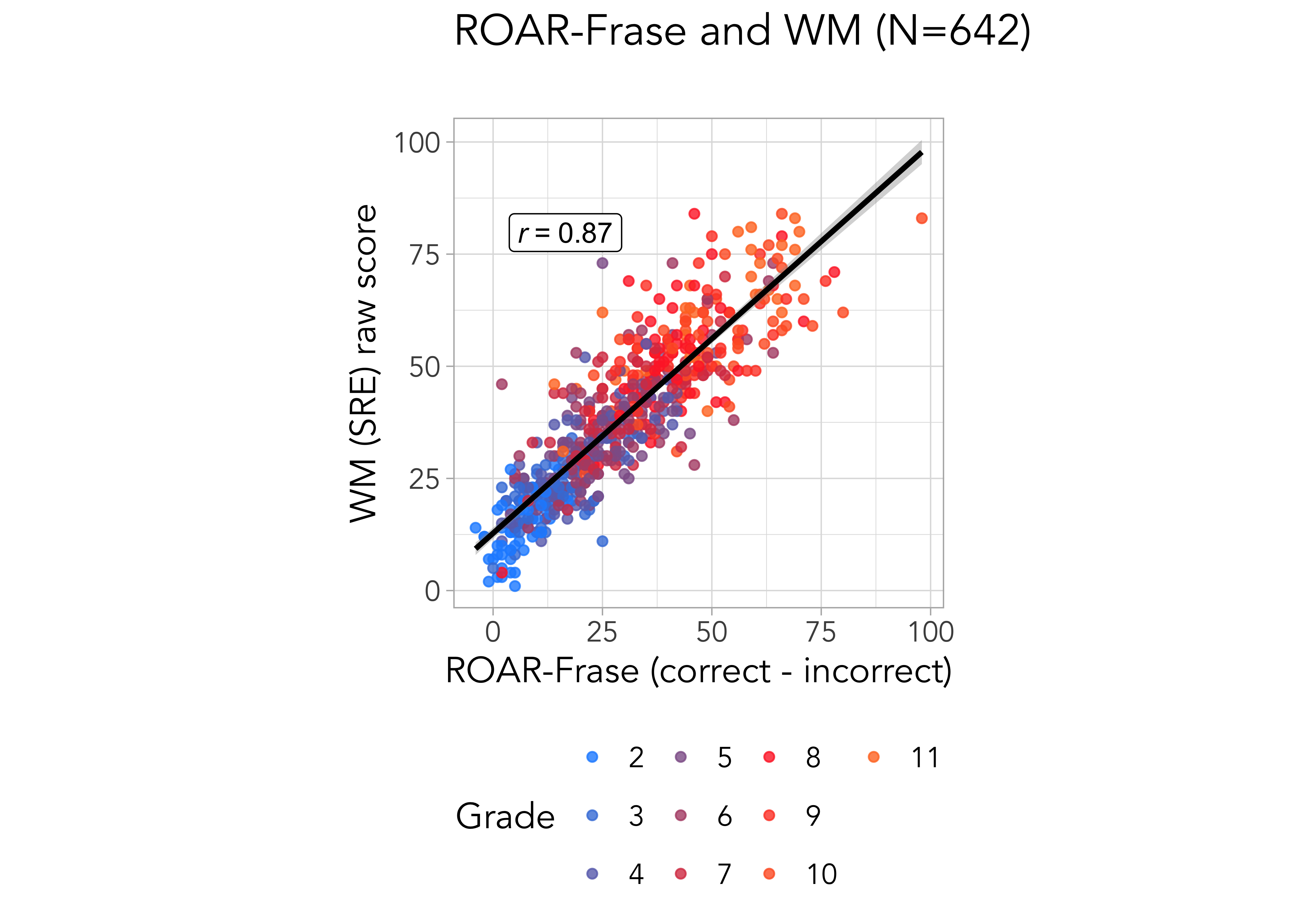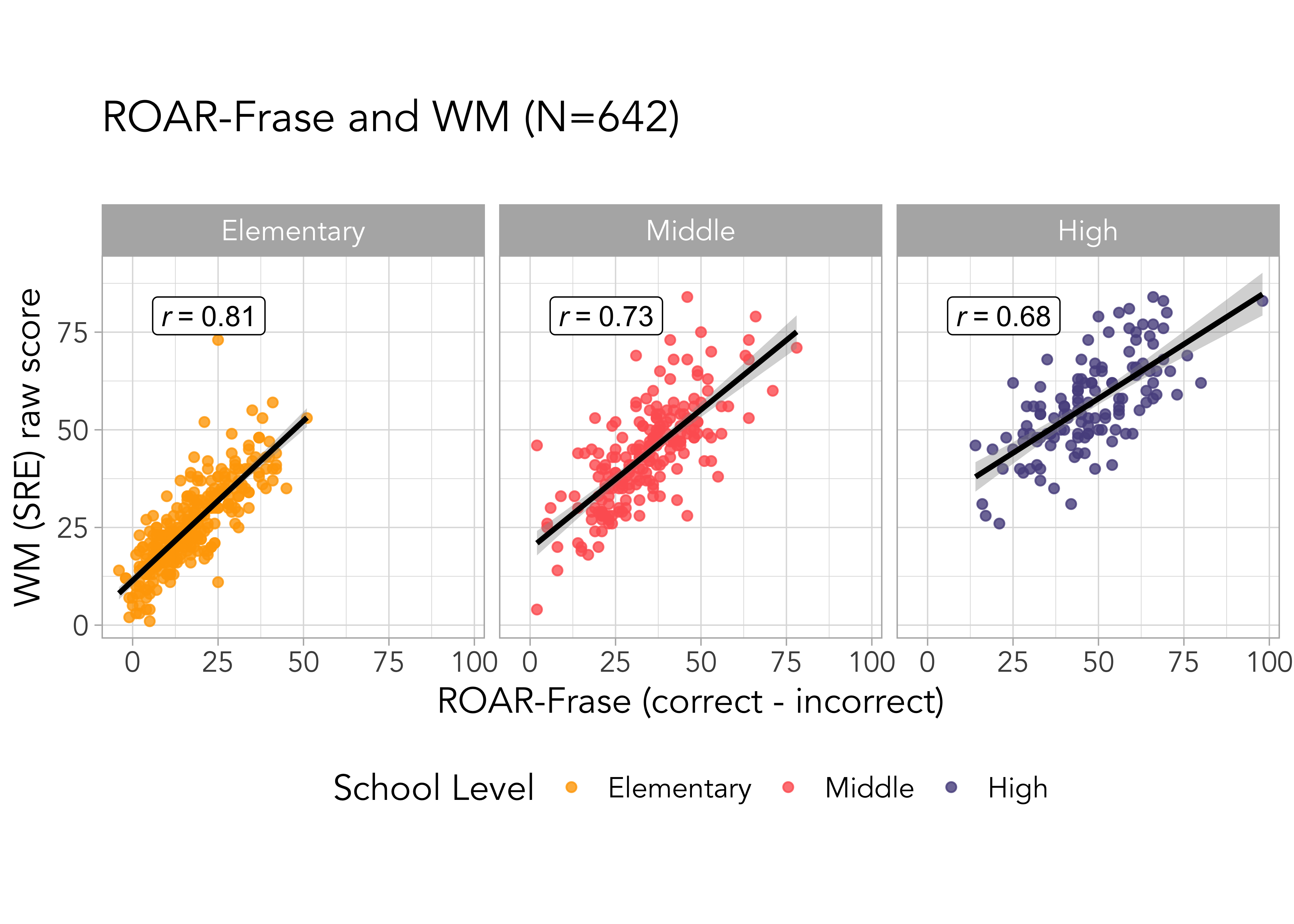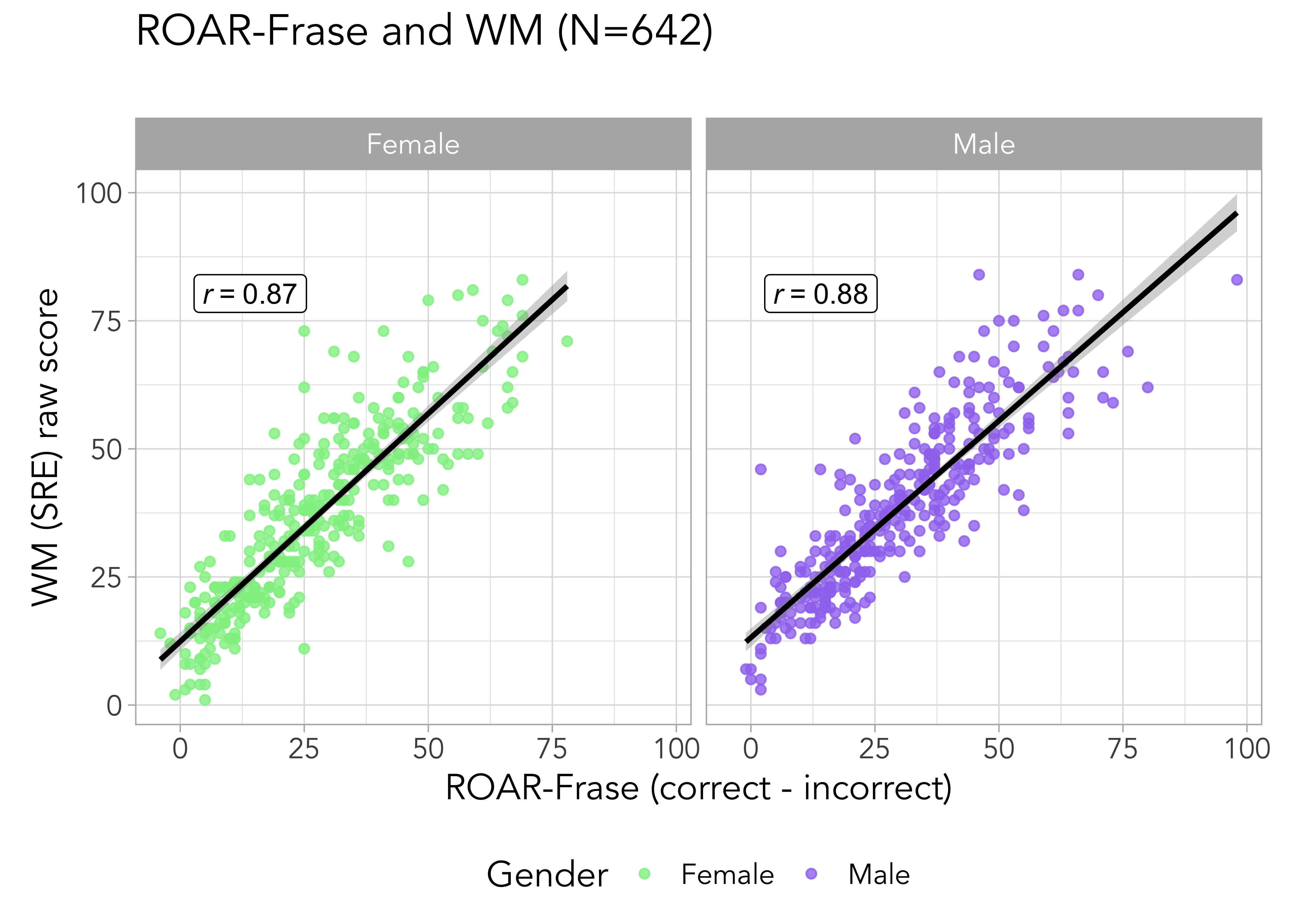| Gender | Count |
|---|---|
| Female | 328 |
| Male | 314 |
27 ROAR-Frase Concurrent Validity
27.1 Convergent validity with Woodcock-Muñoz Fluidez en lectura de frases
Sentence Reading Efficiency (English) or Frase (Spanish) is a measure of silent reading efficiency used to assess efficiency of reading sentences for understanding. The task requires students to read sentences that require little to no background knowledge and determine if they are true or false by pressing the left arrow key for false and the right arrow key for true (or swipe/touchscreen response). Sentences are designed to be universally understandable, regardless of individual student experiences. Students are given two 90-second blocks (totaling 180 seconds) with a break in the middle to avoid fatigue where they are tasked with labeling as many sentences as they can.
Our goal in designing a Spanish silent sentence reading efficiency measure was to more directly target reading efficiency by designing simple sentences that are unambiguously true or false and have minimal requirements in terms of vocabulary, syntax and background knowledge. We establish concurrent validity for ROAR-Frase through a large-scale validation study with Colombia Spanish speaking students from a large public school in a prominent region of the country. We compare student performance on ROAR-Frase to performance on the Woodcock-Muñoz Fluidez en lectura de frases (WM-SRF) sub-test which is the Spanish adapted version of WJ-SRF.
27.1.0.1 Study background
Traditional measures of this construct that are most similar to ROAR-Frase require silent responses in a timed setting, but are not administered online. The WM-SRF is the Spanish adaptation of the WJ-SRF and is administered using a traditional booklet format. In this test, students read sentences and mark their responses with T (true) or F (false) within a 3-minute timeframe. The final score is the number of correctly endorsed sentences responses minus incorrectly endorsed sentences, with skips not counted negatively. This measure is standardized to be administered in a one-on-one setting.
In this validation study, participants were recruited from a large public school, with students from K-11th, in Colombia where students are taught and tested in Spanish. Over 5,000 students from this school completed a battery of ROAR measures, including ROAR-Frase, and a smaller group of students who were chosen randomly within each grade also completed a suite of validation measures. Notably, due to the lack of physical infrastructure in Colombia, a high percentage of the schools across the country serve two shifts (morning and afternoon). Students were selected from both shifts.
Students were randomly selected from within each grade to participate in the validation study. As can be seen in Table 27.1, demographic split by gender is roughly equal for Male and Female within the validation sample.
Figure 27.1 depicts the age breakdowns within each age band of the students in the Colombia validation data set.

We found a strong correlation between ROAR-Frase and WM-SRF (r=0.87) collapsing by grade and using ROAR-Score aggregated across both 90-second blocks, see Figure 27.2.

Within each grade band, we see similar correlations (Figure 27.3). Importantly, there were fewer students in the highest grade range. The elementary group had 303 students, middle school group had 209 students, and the high school group had 130.

Finally, we see strong correlations when broken up between Female and Male groups (r = 0.87 and r = 0.88 respectively in Figure 27.4).
